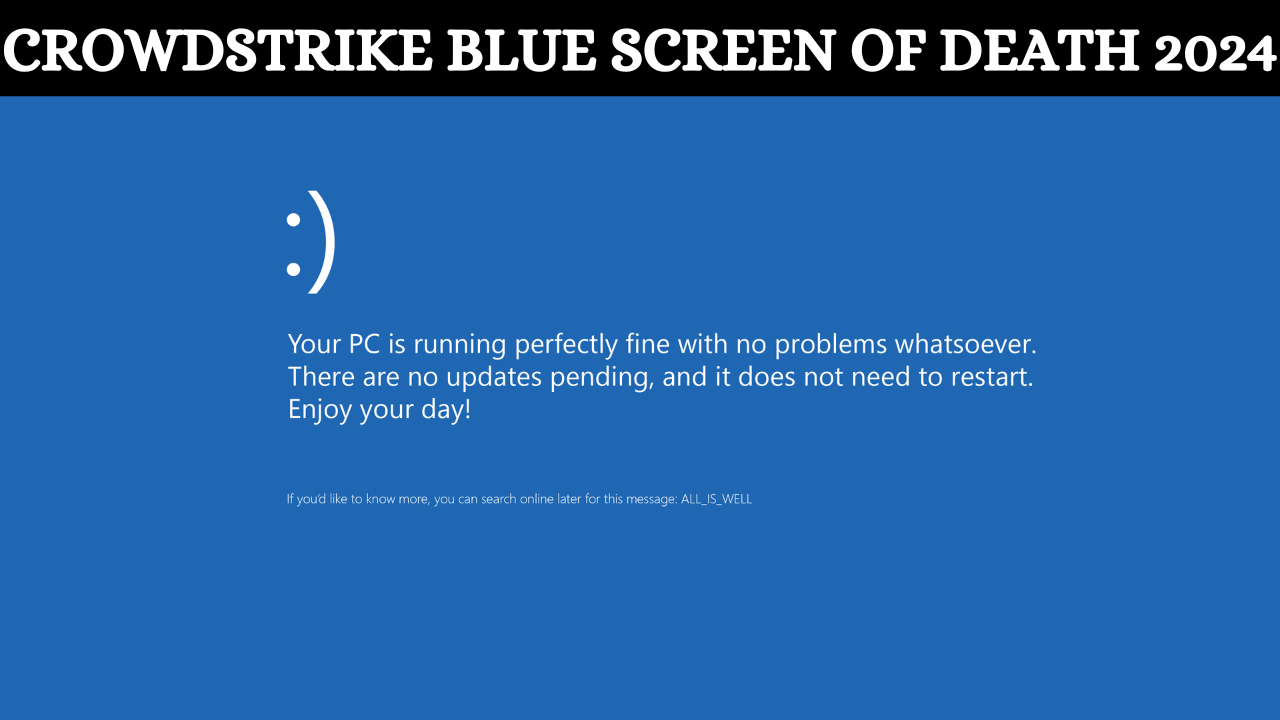The world of cybersecurity faced an unexpected jolt in 2024. The infamous Blue Screen of Death (BSOD), typically a Windows-only phenomenon, made an unwelcome appearance on systems protected by CrowdStrike, one of the leading cybersecurity firms. This incident sent ripples through the IT community, prompting immediate action and raising questions about the reliability of cybersecurity solutions. In this post, we’ll unravel the details of the CrowdStrike Blue Screen of Death 2024 incident, its impact, and what IT professionals can learn from it.
Understanding the Impact on IT Professionals and Businesses
The BSOD is a dreaded sight for any IT professional, signaling system crashes and potential data loss. When the 2024 incident hit systems guarded by CrowdStrike, businesses experienced severe disruptions. Critical operations halted, productivity dropped, and the financial repercussions were significant. For IT professionals, it was a race against time to identify the issue, mitigate damage, and restore normalcy.
Businesses of all sizes felt the heat. Large enterprises with extensive IT infrastructures faced prolonged downtimes, affecting their global operations. Small and medium-sized businesses, often lacking the robust IT support of larger firms, struggled to manage the fallout. The incident underscored the vulnerability of even the most secure systems and highlighted the importance of having contingency plans in place.
Analysis of the Technical Details and Root Cause
To understand the root cause of the BSOD incident, we need to examine the technical intricacies. Initial investigations revealed a conflict between CrowdStrike’s security protocols and a recent update from Microsoft. This conflict triggered system crashes, resulting in the dreaded blue screen. Further analysis pinpointed the issue to a specific driver update that was incompatible with CrowdStrike’s software.
Technical teams from both Microsoft and CrowdStrike worked tirelessly to diagnose the problem. They discovered that the update affected the way CrowdStrike’s software interacted with the operating system’s kernel, causing instability. Understanding these technical details was crucial for developing effective mitigation strategies and preventing future occurrences.
Strategies for Mitigation and Recovery
Mitigating the impact of such incidents requires a multi-faceted approach. First and foremost, IT professionals need to ensure that all systems are regularly updated with the latest patches and security fixes. However, it’s equally important to test these updates in a controlled environment before deploying them across the network.
Another crucial strategy is maintaining comprehensive backups. Regular backups ensure that data can be restored quickly in the event of a system crash. Additionally, implementing redundancy in critical systems can help minimize downtime. IT teams should also develop detailed incident response plans, outlining the steps to be taken in case of a BSOD or similar event.
CrowdStrike’s Response and Future Predictions
CrowdStrike’s response to the BSOD incident was swift and transparent. They acknowledged the issue, provided regular updates, and collaborated closely with Microsoft to develop a fix. This proactive approach helped mitigate the damage and restore customer trust. CrowdStrike’s commitment to resolving the issue and enhancing their software’s compatibility with future updates was evident.
Looking ahead, CrowdStrike is likely to invest in further strengthening their software’s resilience. They may introduce additional layers of testing and validation for new updates, ensuring compatibility with various operating systems. The incident also highlights the need for continuous monitoring and improvement in cybersecurity solutions to stay ahead of evolving threats.
Insight into the Importance of Cybersecurity and Proactive Measures
The CrowdStrike BSOD incident serves as a stark reminder of the critical importance of cybersecurity. In today’s digital landscape, businesses must adopt proactive measures to safeguard their systems and data. This includes not only investing in robust cybersecurity solutions but also fostering a culture of vigilance and preparedness among employees.
Regular training sessions can help employees recognize potential threats and respond appropriately. Implementing multi-factor authentication and encryption protocols adds extra layers of security. Additionally, businesses should stay informed about the latest cybersecurity trends and best practices, adapting their strategies accordingly.
Conclusion – The Road Ahead for CrowdStrike and IT Professionals
The CrowdStrike Blue Screen of Death 2024 incident was a wake-up call for the IT community. It underscored the need for constant vigilance, proactive measures, and robust contingency plans. While CrowdStrike’s swift response helped mitigate the damage, the incident highlighted the inherent vulnerabilities in even the most secure systems.
For IT professionals, the key takeaway is the importance of staying ahead of potential threats. Regular updates, comprehensive backups, and detailed incident response plans are essential components of a resilient IT infrastructure. By adopting these practices, businesses can better protect themselves against future incidents and ensure continuity in the face of unexpected challenges.



